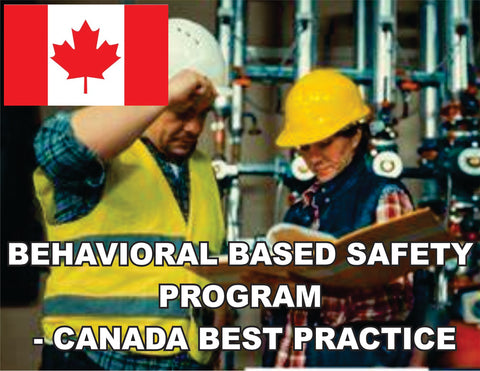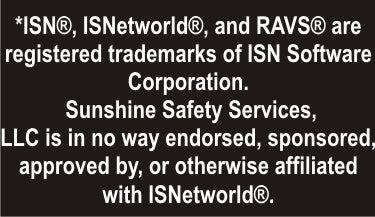Behavioral Based Safety/Job Observations Program - ISNetworld RAVS Section - Canada - Best Practices
$ 24.95
Behavioral Based Safety/ Job Observations Program - ISNetworld RAVS Section - Canada - Best Practices

This Behavioral Based Safety/ Job Observations Program (ISNetworld® RAVS®* Section), in addition to being a complete and functioning written safety program (chapter), it also contains all the required text elements that are sought by the ISNetworld RAVS® (Review And Verification Service) reviewer. This plan has been previously submitted and has achieved a 100% approval rating for our clients.
- All programs are guaranteed now and in the future to achieve 100% approval.
- There are NO maintenance or subscription fees.
- Simply notify us if any program falls out of compliance and we will correct it at NO CHARGE.
You are downloading a MicroSoft® Word document file to your computer that is completely editable:
- Behavioral Based Safety/ Job Observations Program:
- Approximate Word Count: 1,765
- Approximate Number of Pages: 7
- Page Reference Answers to RAVS Reviewer’s Questions: 5
You will also receive instructions for a simple two-step process to place your company name and safety person's name throughout this word document to conform it to your company. Please review, and feel free to alter or add to it as you wish with any specific company information or safety policies that you may already have.
The first two pages of the document are guidelines for conforming this safety manual section, an index for completing the RAVS® questionnaire (with all page references), and uploading the section.
If you experience any difficulty filling out the questionnaire, or have any questions in general about these documents, call 314-570-0072, or e-mail me at vsunshine1@gmail.com.
An excerpt from ISNetworld® RAVS®* Safety plan Behavioral Based Safety/ Job Observations Program
Program Overview
A quick review of many corporate construction records, as well as data collected and reported by regulatory agencies, clearly indicates that the success or failure in managing construction performance is judged through use of indicators such as, number of regulatory or permit violations, number of spills or incidents, and the cost of fines/penalties assessed or paid. All of these being “lagging” or more simply a record of the incident after it has occurred. While these certainly indicate how well a company has performed - or more accurately not performed - it typically provides little information on how to best manage future actions in preventing the next construction incident.
One of the keys to prevention is managing the human behaviors and actions that result in construction incidents. Often these behaviors are not adequately identified and explored even when performing incident root cause analyses. There is ample anecdotal evidence to suggest that human behaviors whether positive or negative are the true root causes of the majority of incidents. If these behaviors and their associated actions (or inactions) can be identified, measured, and controlled it may be possible to proactively manage the follow-on work processes and prevent future construction incidents before they occur.
One of the often overlooked keys to preventing construction incidents is managing the human behaviors and actions that contribute to the probability and severity of an incident. The construction industry has utilized behavior based safety practices for many years to assess safe behaviors and prevent accidents from occurring. In some ways, behavior based safety has always included construction aspects that are intertwined with safety, specifically when they include use of hazardous materials and general good housekeeping practices. However, other behaviors that could lead to non-compliant construction practices are typically not included in such safety





